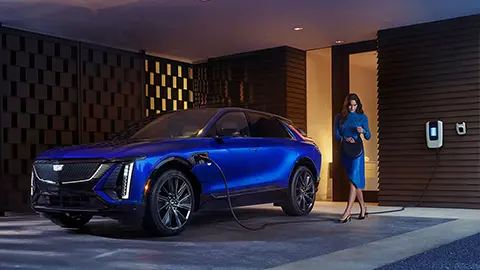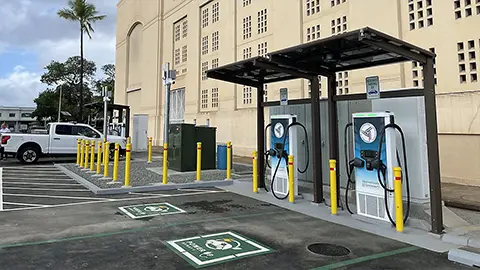BMW Offering A Zero-Emissions Alternative To EV Batteries
While we spend a lot of time on GreenCars talking about electric, hybrid, and plug-in hybrid cars, there’s one other type of vehicle that runs emissions-free and can help us on our way to a more sustainable future: hydrogen. Japanese manufacturers like Honda and Toyota have been believers in hydrogen’s combination of zero carbon emissions and quick refueling for many years – and so has BMW, who first trialed a hydrogen-powered 7 Series sedan in the late nineties.
Now, even as it invests heavily in fully-electric models like the i4 hatchback and iX SUV, BMW is about to commence small-series production of the BMW iX5 – a hydrogen fuel cell SUV. The iX5, having already completed an intensive testing program around the world, will be used by BMW as a technology demonstrator and a test-bed for hydrogen technology starting in 2023.

Why Does BMW Think Hydrogen is Important?
Why does BMW think hydrogen is important? The company says that it’s a versatile energy source that has a key role to play in progress towards climate neutrality.
Hydrogen-powered drivetrains combine all of the benefits of an emission-free drive system with the everyday usability and long-distance capabilities of gasoline vehicles. This makes hydrogen fuel cell cars an attractive alternative to battery-electric drive systems. They’re especially good for customers for whom short refueling stops and long ranges are a must, as well as for parts of the world that still lack adequate charging infrastructure.
Perhaps equally important, hydrogen fuel cells (which power electric motors) don’t require critical and expensive raw materials for batteries like cobalt, lithium, or nickel – which often come from conflict-prone parts of the world. Therefore, the company feels that by investing in hydrogen, they are also strengthening their geopolitical resilience.
Of course, the infrastructure doesn’t yet exist for hydrogen to become a widespread reality – yet. But BMW is certain that the fuel will become increasingly important for individual mobility – and considers a mix of battery-powered electric cars and fuel-cell electric drive systems to be the best approach for the long term.

Where is this BMW EV Built?
The BMW iX5 Hydrogen is built at the company’s pilot plant at its research and innovation center in Munich. This assembly line is where every new model from the company is made for the first time before large-scale production commences around the world. Around 900 people work in the facility – with staff across body shop, assembly, model engineering, concept vehicle construction and additive manufacturing functions. They ensure that both the product and the manufacturing process are ready for large-scale production.
In the case of the BMW iX5 Hydrogen, specialists in hydrogen technology, vehicle development and the initial assembly of new models work closely to integrate the cutting-edge drivetrain and energy storage technology.
Base bodies for the iX5 Hydrogen actually come from America, and BMW’s Spartanburg, South Carolina assembly plant, which makes the standard X5. (In fact, the X5 is one of the top-selling plug-in hybrids in the U.S.). When they arrive in Munich, the bodies are fitted with a new floor assembly, which makes room for two compressed hydrogen fuel tanks in the center tunnel and under the rear seat.
Then, the special 12-volt and 400-volt electrical systems, high-performance battery, electric motor, and hydrogen fuel cell are installed into the iX5 Hydrogen, alongside standard production parts. The battery and electric motor are positioned in the rear axle area, while the fuel cell system is located under the hood, where the gasoline engine would normally reside. The electric motor is the same as in the latest-generation electric BMW models, while the fuel cells are made by BMW’s hydrogen competence center in Garching, just north of Munich.
Numerous components are specific for the hydrogen-powered iX5 SUV, including some made at the BMW’s additive manufacturing campus – its 3D printing facility – which also forms part of the pilot assembly line. Every vehicle also undergoes a comprehensive road test at the BMW test center in Aschheim.

When Will We See the BMW iX5 Hydrogen on the Road?
How long will it be before we see something like the BMW iX5 Hydrogen fuel-cell SUV on our roads? It’s hard to say. If BMW’s tests go well, and market demand for hydrogen vehicles increases, the company could easily ramp up higher volume production at one of its plants around the world.
Regardless, even small-scale production of the iX5 Hydrogen and its BMW-developed fuel cell systems demonstrates the company’s flexible thinking and its know-how in the field of small-scale manufacturing. When the world is ready, BMW will be ready to integrate hydrogen technology into its production system seamlessly.
















